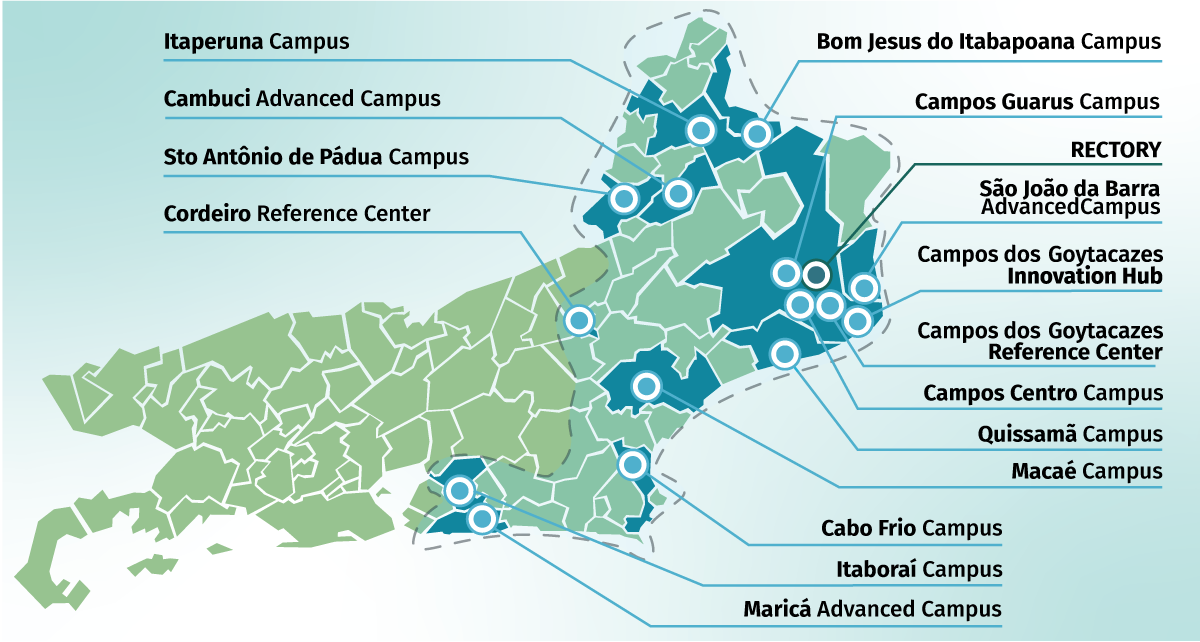
IFFluminense and its territory
In the movement of territorialization, the Fluminense Federal Institute (IFF) is present in 12 municipalities, with a spatial mesh that reaches 12 campuses, one Innovation Hub, one Educational Reference Center for Technology, Information and Communication, one Training Unit and the Rectory.
The Institute covers the municipalities of Bom Jesus do Itabapoana, Itaperuna, Cambuci and Santo Antônio de Pádua in the Northwestern Fluminense region; Cordeiro in the Mountain region; Campos dos Goytacazes, São João da Barra, Quissamã and Macaé in the Northern Fluminense region; the region of the Coastal Plains, Cabo Frio, and the municipalities of Itaboraí and Maricá in the Metropolitan area.
In this territory occupation movement, we work with a vertical supply of Education with the Initial and Continuing Education; Vocational Programs, mostly integrated with High School; Degrees; Higher Education Technology and Bachelor Degrees, extending the provision of educational training to the Undergraduate and Graduate Programs.
The internalization of the IFF deserves important record as it multiplied the opportunities of access to Education for thousands of young people and adults, extending their right to knowledge and work, either through Initial and Continuing Education of workers, Vocational Training or Higher Education, forcing structural changes in the social pyramid.
Within this scenario, the movement of expansion and internalization of the IFF put us ever before the need for a refreshed look for these 'new spaces', reaffirmed by a brave stance of our institution to anticipate the social movement, not because we are shielded against errors, but because we are certain of the wide range of educational policies.
Our address is the state of Rio de Janeiro, which has resumed its socio-economic dynamics, characterized by a spatial deconcentration: from the capital to the interior of the state. This spatial mesh of large state investments matches partly with the territorial performance of the IFF. It is crucial to consider such a heterogeneous territory, to anticipate the observation of its potential and to create routes for the inclusion of youth and adults who seek for professional and vocational training as well as schooling elevation.